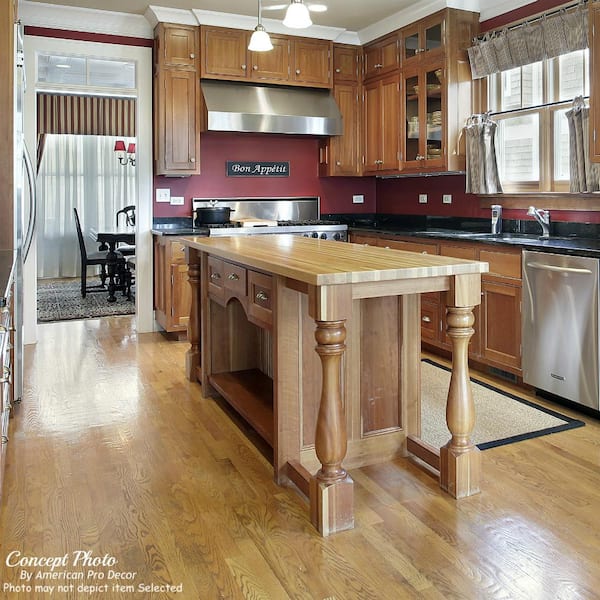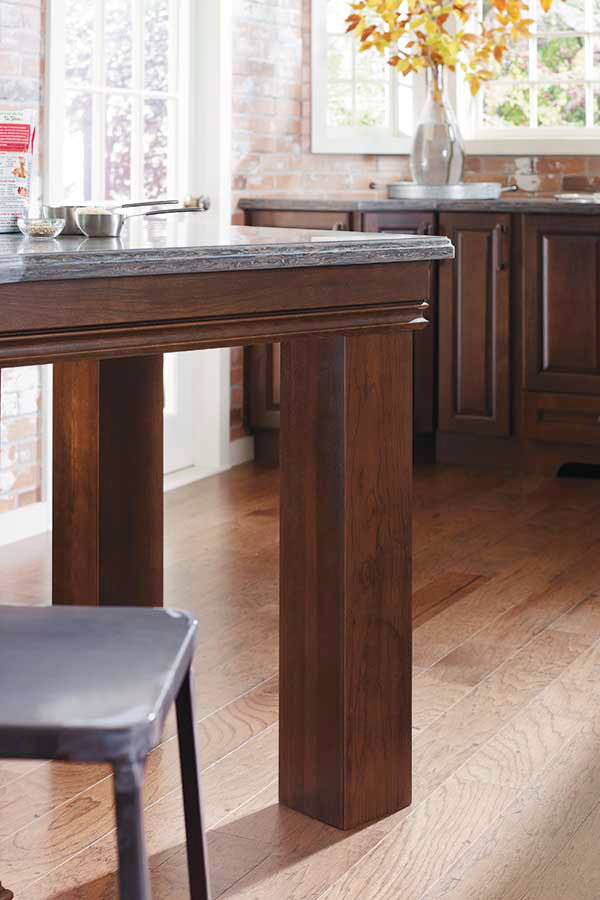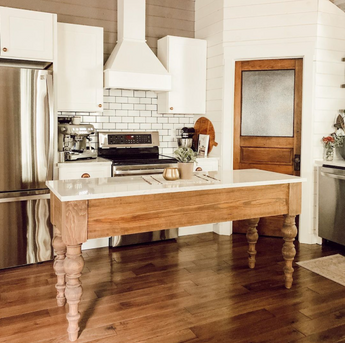Top Notch Kitchen Island Legs for a Sturdy Space Station
Top Notch Kitchen Island Legs for a Sturdy Space Station
Blog Article
Essential Tips for Selecting the Perfect Dining Table for Your Kitchen
Selecting the perfect eating table for your cooking area is even more than simply a matter of taste; it requires a thorough understanding of your space and needs. Begin by gauging your available space to ensure adequate clearance for motion. The shape of the table plays an essential duty; while rectangle-shaped tables match bigger locations, round ones foster intimacy, and extendable choices provide flexibility. Material selection is just as crucial, with woods giving longevity and glass borrowing a modern-day touch. The table needs to harmonize with your cooking area's aesthetic appeals and accommodate your household comfortably. What other variables might influence this vital decision?
Action Your Space
Choosing the suitable dining table begins with a precise evaluation of your offered space. This foundational step ensures that the table not only fits comfortably within the area but also enhances the general format and capability of your eating area.
Think about the flow of movement around the table. It is important to leave ample space for chairs to be taken out and for people to move the table without obstruction. A basic guideline is to permit a minimum of 36 inches of clearance from the edge of the table to the local wall surface or item of furniture. This guarantees ease of access and convenience during meals.
In addition, believe about the variety of people you normally captivate and whether you require extra room for guests. Choosing for an extendable table can provide versatility, allowing you to fit differing numbers of restaurants. By properly measuring your room, you prepared for selecting a table that enhances both the appearances and functionality of your eating location.
Choose the Right Shape

On the other hand, round tables are exceptional for smaller sized kitchen areas or intimate gatherings, as they promote conversation by allowing everyone to deal with each various other. They also give a feeling of coziness and can fit well in tighter areas as a result of their absence of sharp edges. Oblong tables use the very best of both worlds, combining the length of rectangle-shaped tables with the affection of rounded ones, making them flexible for various settings.
Square tables are another alternative, especially fit for square-shaped areas. They create a balanced and contemporary look, cultivating an equal eating experience for all seated.
Product Considerations
When choosing a dining table, material factors to consider are paramount in identifying the table's resilience, upkeep needs, and general aesthetic. Timber is a traditional option, providing ageless charm and effectiveness.
Glass-topped tables give a modern-day, sleek look and can make an area show up larger because of their transparency. They require frequent cleaning to protect against fingerprints and spots. Furthermore, tempered glass is recommended for its extra stamina and security.

Lastly, composite products like MDF (Medium-Density Fiber board) or plywood are affordable alternatives. These products can mimic the appearance of solid wood but may not supply the exact same longevity. They are generally less complicated to tidy but can be susceptible to water damages otherwise appropriately sealed.
Inevitably, the option of material should straighten with your kitchen area's design, your lifestyle needs, and your budget restraints. (kitchen island legs)
Seating Capacity and Convenience
Just how do you determine the ideal seats capacity and comfort for your eating table? This vital step includes examining both the physical room readily available in your kitchen and your family's useful needs. Begin by measuring your kitchen area to make certain the table fits conveniently, enabling at the very least 36 inches of clearance around it for very easy activity. Think about the variety of individuals that generally eat together, as this will certainly affect the table size. For a household of 4, a rectangle-shaped table of 48 inches long or a round table with a 48-inch diameter is generally adequate.
Comfort is equally important. The height of the table need to preferably be around 30 inches, giving a a fantastic read balanced ergonomic stance for seated restaurants. Chairs need to sit height of 18 to 20 inches to ensure a comfortable eating posture. Furthermore, take into consideration the chair design; encouraging back-rests and upholstered seats can boost eating comfort substantially, specifically during prolonged dishes.
Design and Looks
Selecting an eating table that fits your design and aesthetic appeal includes stabilizing individual preference with the existing design of your eating space. The eating table is usually the focal point of the kitchen area, and its style should enhance the total motif of the space. Whether your kitchen area flaunts a contemporary, minimal appearance or a rustic, farmhouse appeal, the table you select must integrate with these components to create a natural and welcoming atmosphere.
Consider materials thoroughly; timber offers a timeless appeal and can vary from abundant mahogany for a standard seek to lighter oak for a contemporary feel. Steel and glass tables, on the other hand, can present a sleek, industrial side to your cooking area. Don't overlook the table's shape-- rectangle-shaped tables are versatile and timeless, while round and oblong alternatives can cultivate an extra intimate eating experience.
In addition, pay close attention to surfaces and information. A distressed finish could include character and warmth, whereas a shiny surface can add to a tidy, modern visual. Eventually, your table need to not only healthy perfectly into your kitchen area's layout yet additionally reflect your personal design, raising the space both functionally and aesthetically.
Verdict
Finally, picking the optimal eating table for a cooking area necessitates careful evaluation of space, shape, material, seating capability, and aesthetic consistency. Ensuring a minimal clearance of 36 inches assists in comfy activity, while the choice of form improves spatial characteristics. Material option effects resilience and layout, making it crucial to line up with the kitchen's general aesthetic. Ultimately, a well-chosen eating table promotes a Home Page welcoming ambience and accommodates the household comfortably, therefore improving the eating experience.

When choosing a dining table, material considerations are paramount in identifying the table's resilience, upkeep requirements, and total aesthetic. For a family of 4, a rectangular table of 48 inches long or a round table with a 48-inch size is normally sufficient.
Don't neglect the table's form-- rectangular tables are functional and classic, while round and oblong choices can promote a more intimate eating experience. kitchen island legs.
Report this page